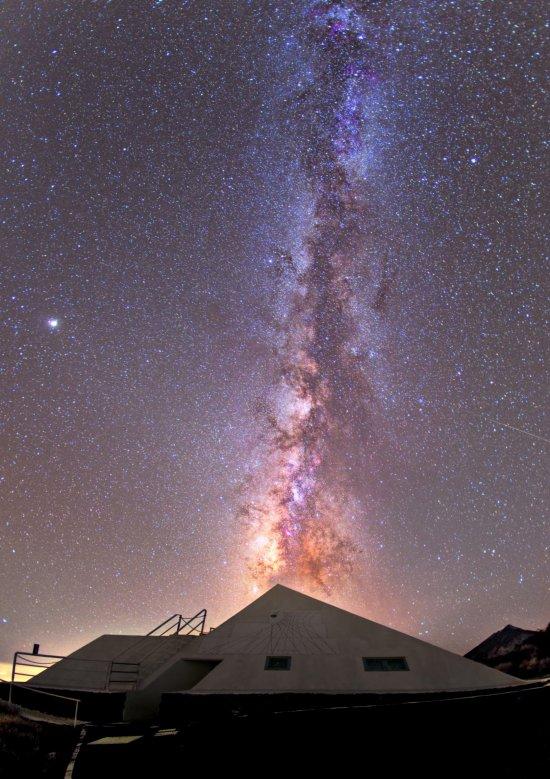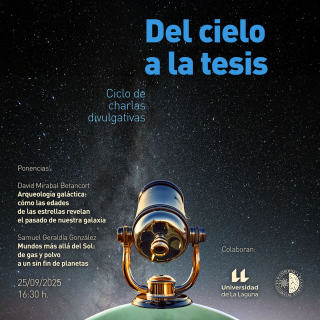The conference will focus on Helioseismology and Asteroseismology, with particular emphasis on results from the latest observation projects. In all there will be some 60 presentations and 100 posters.
The findings of the Kepler Space Mission will be unveiled and the SDO mission, also a NASA project, will be launched, providing crucial new information about the interior of stars and the sun respectively. Scientists from both projects will be on Lanzarote for the conference.
The science of the sound of stars
Seismology provides a window through which the interior of an object, like the Earth or a star, can be observed. Geophysicists measure variations in the surface of the Earth by placing instruments at different locations to give a detailed view of the planet. In stars these variations affect the level of brightness, and by looking at this we can obtain information about their structure and internal dynamics. Every star is like a musical instrument that "chimes" at its own frequency, and it is the way they vibrate, their oscillation mode, that tells us what is inside them.
By the end of the 1970s seismological techniques were beginning to be used for surveys of the interior of the Sun and during the decade that followed they were applied to other stars to give us information about their internal structure. The HELAS (European Helio- and Asteroseismology) Network was created in 2006, with funding from the European Commission, as a "Coordination Network" under the Sixth Framework Programme (FP6). Since its inception HELAS has successfully developed and supported a variety of European Solar and Stellar Seismology projects. Under its auspices, twenty or so specialist meetings have taken place to allow knowledge and technology to be disseminated amongst researchers from different laboratories and countries. The Network has also sponsored three international conferences to date, with this 4th International HELAS conference being the last in the series.
In the words of Pere Pallé, leader of the IAC Solar and Stellar Seismology Group and co-ordinator of one of the European HELAS project's five work streams, new challenges are now appearing for Stellar Seismology and three dimensional observation of the Sun's interior. According to Pallé, one of the main goals for work on the Sun is developing our understanding of its activity cycle, for which we will need information about activity in the environment around it as well as on its surface and in its interior. The fact that "we are getting better and better at predicting how and when this activity will occur," is cause for optimism, Pallé says.
A golden age for Stellar and Solar Seismology
The latest observation projects, like Kepler and CoRoT (which are currently running), Picard and SDO (planned for 2010) are generating, and will continue to generate, large amounts of seismological data that will greatly increase our knowledge about the Sun and the stars.
Sebastián Jiménez Reyes, an IAC researcher and manager of the European HELAS project, says that "Kepler and CoRoT ((COnvection ROtation and planetary Transits) are giving us, for the first time, observations of Sun-like stars that are as good as the observations of our own Sun that we were carrying out thirty years ago."
We are in a golden age for researchers in this field. In the coming week NASA will announce the results from the Kepler mission, which searched for exoplanets by using transits, the dimming of a star's light as a planet passes in front of it. Kepler will provide astroseismologists with detailed information about large numbers of stars. In addition, the SDO (Solar Dynamics Observatory) mission is planned for launch in the next few days. SDO will look at how the Sun influences the Earth and its surroundings and it will signal the start of NASA's "Living with a Star" programme.
A world class event
150 experts from over 20 countries, amongst them Conny Aerts, from the Catholic University of Leuven (Belgium), Annie Baglin of the Paris Observatory (France), Jørgen Christensen-Dalsgaard of the University of Aarhus (Denmark), Thierry Corbard, of the Côte d'Azur Observatory (France), Maria Pia Di Mauro of INAF-IASF (Italy), Laurent Gizon of the Max Planck Institute for Solar System research (Germany), Frank Hill of GONG/NSO (USA), Eric Michel from the Paris Observatory (France), Mário J. Monteiro of the Centre for Astrophysics of the University of Porto (Portugal), Michael Thompson of the University of Sheffield (United Kingdom) and Oskar von der Lühe of the Kiepenheuer Institute for Solar Physics (Germany).
The European Space Agency (ESA) will continue to back research into the interior of stars. Its "Cosmic Vision" programme, planned for the ten years between 2015 and 2025, will include the Solar Orbiter and Plato missions which will carry out Helio- and Asteroseismology respectively. The Instituto de Astrofísica de Canarias (IAC) will be a partner in both and has also dedicated its 2010 Winter School to a proposal from its Solar and Stellar Seismology Group. The IAC Winter Schools provides an opportunity for up to forty PhD graduates from all over the world to improve their understanding of a prominent astrophysics related discipline through seminars led by eminent international researchers in the field.
The "4th International HELAS Conference" has been organised by the Instituto de Astrofísica de Canarias (IAC) with support from the HELAS network, the Spanish Ministry for Science and Innovation, the Council of Lanzarote and the Municipality of Arrecife.
Further information:
Press contact:
Annia Domènech (IAC)
Tel.: 617131448
annia [at] iac.es (annia[at]iac[dot]es) / annia [at] caosyciencia.com (annia[at]caosyciencia[dot]com)



